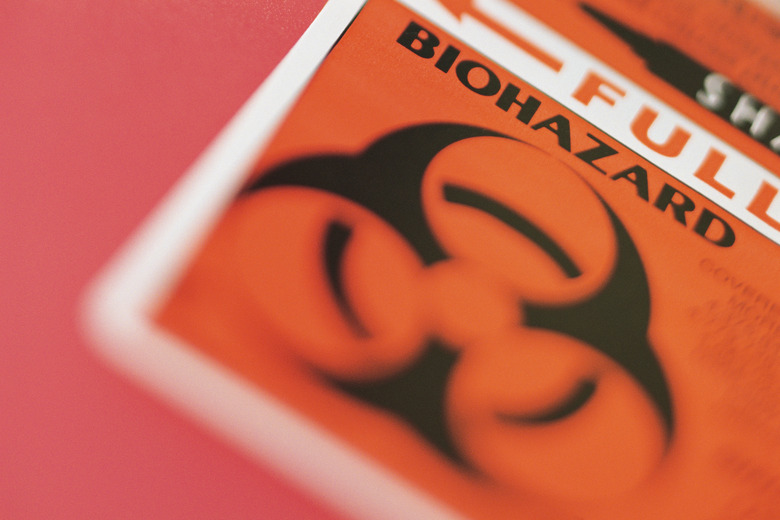What Materials Go In Red Biohazard Bags?
Red biohazard bags are primarily for medical waste and should be used as liners in a hard secondary container. All safety guidelines for handling these bags should be followed carefully.
What Goes Into Red Biohazard Bags
What Goes Into Red Biohazard Bags
Red biohazard bags are generally reserved for medical waste, but they can also be used for food processing or biotech waste that contains a potentially infectious agent. These materials include gloves or any other personal protective equipment with blood or other bodily fluids on it — as well as human or animal specimen cultures. Any wastes from other cultures or infectious agents can also be placed in red biohazard bags.
What Doesn't Go In
What Doesn't Go In
Several items should definitely not go into the red biohazard bags, according to Stericycle, a manufacturer of biohazard bags, in its post "Medical Waste and Sharps Disposal FAQs." These items include: compressed gas cylinders, sharp objects, chemical waste, radioactive waste, fixatives, preservatives, household or food waste, and biotech or food waste that does not contain infectious agents. In some jurisdictions, liquid biohazard waste can be disinfected and then dumped into the sewer system. Some jurisdictions use clear biohazard bags to disposed of pharmaceuticals or other controlled substances.
How to Package and Handle Bags
How to Package and Handle Bags
Red biohazard bags should always be handled with care. Ready or in-use bags should be used as liners inside a secondary container, preferably a hard container with a tight-fitting lid. The container should not be made of cardboard or have a swinging lid, according to the Stanford School of Medicine in its website article "Medical Waste Inspection Checklist." All sides and the lid of a secondary container should be marked "biohazardous waste." Secondary containers should be marked in compliance with state and federal regulations.
Proper Disposal
Proper Disposal
When handling full biohazard bags for disposal, proper personal protective equipment should be worn, including a lab coat, safety glasses and rubber gloves. Avoid touching doorknobs and surfaces if possible. The bags should be moved to the nearest appropriate waste pickup container. If a bag leaks, it should immediately be placed in the secondary pickup container. After handling full bags for disposal, gloves should be removed and hands should be washed properly. Secondary containers should regularly be cleaned and disinfected.
Cite This Article
MLA
Smith, Brett. "What Materials Go In Red Biohazard Bags?" sciencing.com, https://www.sciencing.com/materials-go-red-biohazard-bags-7445252/. 24 April 2017.
APA
Smith, Brett. (2017, April 24). What Materials Go In Red Biohazard Bags?. sciencing.com. Retrieved from https://www.sciencing.com/materials-go-red-biohazard-bags-7445252/
Chicago
Smith, Brett. What Materials Go In Red Biohazard Bags? last modified March 24, 2022. https://www.sciencing.com/materials-go-red-biohazard-bags-7445252/
